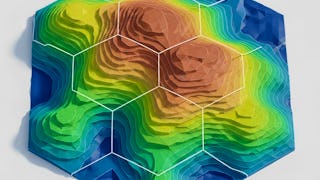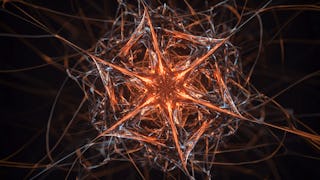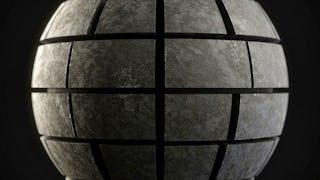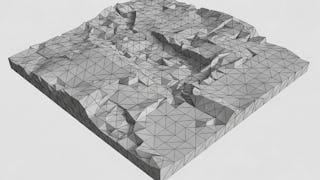This intermediate-to-advanced course guides learners through the structured development of procedural surface systems in Unity using noise-based methods. Through six focused modules, participants will explore dimensional noise functions, gradient masks, resolution control, derivative computation, and flow visualization using particle systems and scripting.


您将获得的技能
要了解的详细信息

添加到您的领英档案
August 2025
18 项作业
了解顶级公司的员工如何掌握热门技能

积累特定领域的专业知识
- 向行业专家学习新概念
- 获得对主题或工具的基础理解
- 通过实践项目培养工作相关技能
- 获得可共享的职业证书

该课程共有6个模块
This module introduces learners to the foundational concepts and practical setup for procedural noise generation in Unity. It covers the theory of noise, setting up a visual platform using quads, interfacing with the Texture Creator script via the Inspector, and understanding wrap modes. It also delves into how spatial transformations and resolution settings influence texture output and how deterministic methods like value duplication can ensure consistent sampling. By the end of this module, learners will have built the groundwork for more advanced procedural content systems by manipulating and configuring 2D texture behaviors programmatically.
涵盖的内容
7个视频3个作业
This module introduces flexible programming constructs and foundational techniques for generating procedural noise in Unity. It begins with the use of delegates to abstract and pass custom noise functions dynamically, enabling modularity and reusability. Learners explore how to structure 2D and 3D float-returning functions to generate procedural values. The module then builds toward implementing Perlin noise and customizing value methods, culminating in the use of gradient masks to shape surface influence. These techniques provide the backbone for flexible, scalable procedural content systems that respond to both spatial and runtime dynamics.
涵盖的内容
6个视频3个作业
This module focuses on customizing the spatial characteristics and complexity of procedural textures in Unity by manipulating texture dimensions, frequency, and layered noise. Learners will explore how to define texture resolutions, apply both 2D and 3D gradient masks for localized control, and refine procedural results through frequency scaling. The module concludes with the use of octaves to layer multiple noise functions for more realistic and organic outcomes, culminating in the creation of an isolated surface scene for controlled testing and visualization of procedural systems.
涵盖的内容
5个视频3个作业
This module guides learners through the construction and refinement of procedural surfaces using Unity’s mesh manipulation and noise application systems. It covers how to generate a custom mesh grid, apply noise to create terrain-like displacement, and fine-tune results through parameters such as resolution, strength, and offset. Learners will also implement responsive update mechanisms using refresh methods, allowing real-time control and visualization of procedural changes. By the end of this module, learners will have built a flexible and adjustable system for generating dynamic surfaces in 3D space.
涵盖的内容
6个视频3个作业
This module introduces the concept of sampling and derivatives in procedural noise systems to enhance visual detail and control in surface generation. Learners will explore how to extract directional information from noise fields, encapsulate both values and gradients using custom data structures, and implement static and dynamic noise samples for debugging and consistency. The module further covers how derivatives are computed for both value and Perlin noise, including the use of analytical methods to efficiently derive slope and flow characteristics in 2D and 3D spaces.
涵盖的内容
6个视频3个作业
This module focuses on converting procedural noise data into dynamic visual representations by integrating flow fields, derivative smoothing, and particle systems. Learners will validate noise type compatibility, smooth derivative transitions to improve surface continuity, and build flow visualization components that convey direction and intensity using visual elements. Through the use of particle trails, GameObjects, and scripting, the module teaches how to express flow dynamics in 3D environments using Unity’s rendering and scripting systems.
涵盖的内容
6个视频3个作业
获得职业证书
将此证书添加到您的 LinkedIn 个人资料、简历或履历中。在社交媒体和绩效考核中分享。
从 Design and Product 浏览更多内容
 状态:免费试用
状态:免费试用 状态:免费试用
状态:免费试用 状态:免费试用
状态:免费试用
人们为什么选择 Coursera 来帮助自己实现职业发展




常见问题
To access the course materials, assignments and to earn a Certificate, you will need to purchase the Certificate experience when you enroll in a course. You can try a Free Trial instead, or apply for Financial Aid. The course may offer 'Full Course, No Certificate' instead. This option lets you see all course materials, submit required assessments, and get a final grade. This also means that you will not be able to purchase a Certificate experience.
When you enroll in the course, you get access to all of the courses in the Specialization, and you earn a certificate when you complete the work. Your electronic Certificate will be added to your Accomplishments page - from there, you can print your Certificate or add it to your LinkedIn profile.
Yes. In select learning programs, you can apply for financial aid or a scholarship if you can’t afford the enrollment fee. If fin aid or scholarship is available for your learning program selection, you’ll find a link to apply on the description page.
更多问题
提供助学金,





